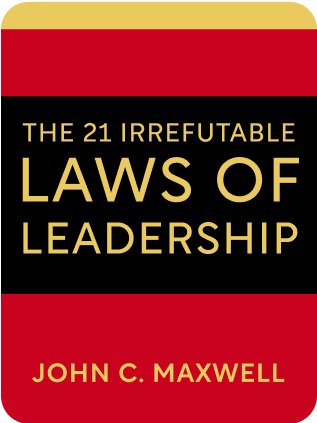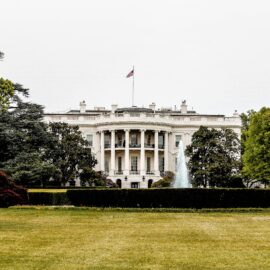

This article is an excerpt from the Shortform book guide to "The 21 Irrefutable Laws Of Leadership" by John C. Maxwell. Shortform has the world's best summaries and analyses of books you should be reading.
Like this article? Sign up for a free trial here .
What is the Law of Big Mo? What can you, as a leader, do to keep your employees motivated to consistently deliver their best performance?
The Law of Big Mo is the sixteenth law of leadership according to John C. Maxwell. The basic premise behind the Law of Big Mo is that motivation is propelled by momentum. Maxwell likens momentum to a freight train—it takes a lot of energy to get it moving, but once it gets going, it can plow through anything.
Keep reading to learn about the Law of Big Mo and how to put it to work for your business.
John C. Maxwell: The Law of Big Mo
Keep in mind that momentum doesn’t always bring positivity. The train can be full of money, or it can be full of garbage. Whether or not you want the freight, once the train is moving fast, it’s hard to stop it.
There are some points to keep in mind as you work on applying the Law of Big Mo:
- Momentum has a magnifying effect.
- Example #1: When a sports team is in a slump, no matter what coaches and athletes try, nothing seems to help.
- Example #2: In basketball games, when a team is starting to get on a streak—starting to develop momentum—the other team’s coach will call a timeout to try to dissipate the momentum.
- Momentum makes leaders look disproportionately good. When things are going well, it’s easy to only see the positives.
- For example, older leaders may not be as good as everyone thinks they are, and younger, newer leaders are usually better than everyone gives them credit for.
- Momentum makes followers perform disproportionately well. Followers not only appear better than they are, but actually perform at a higher level.
- For example, the 1980 US Olympic hockey team shouldn’t have won the gold medal. They weren’t as good as the other teams. But leading up to the gold-medal game, they got on a roll. They beat tough teams, including the Russians, and had so much momentum no one could stop them.
- Momentum is hard to start but easier to maintain.
- For example, recall the freight train analogy. It’s hard to get a really heavy piece of equipment moving. Once it’s moving, though, it doesn’t take as much energy to keep it going, or to steer it.
- Momentum is the best way to create change. When something is working, even if it’s new and different, everyone wants to be on the winning side.
- For example, when a sports team starts winning, everyone starts supporting them, even if they weren’t previously interested in the sport, and sometimes even if they would normally cheer for a different team.
- Momentum is created by leaders. Creating momentum requires vision, motivation, and a good team, and leaders can encourage momentum by celebrating and rewarding accomplishments. Followers can get on board with momentum, and managers can use it, but leaders are the ones who start it.
Example of Failed Application of the Law: Lucasfilm Computer Graphics Division
The cofounder of Pixar was Ed Catmull, a failed animator who studied physics and math and eventually found his calling in computer animation. Catmull developed new software and dreamed of making computer-animated full-length films. George Lucas hired Catmull and Catmull put together a strong team including John Lasseter, who had formerly worked at Disney. Catmull’s team produced the “Genesis” sequence in Star Trek II, and while it was groundbreaking, Catmull still wasn’t able to convince Lucas to let him make a feature film. Though Catmull’s division had passion, resources, and a good team, it didn’t have momentum. Lucas sold Catmull’s division to Steve Jobs.
Example of Successful Application of the Law: Pixar
Steve Jobs named the division Pixar and put five million dollars into it. Pixar made a short film called Luxo Jr., which is about a “parent” lamp and a “child” lamp. At the time, computer-animated films were mainly attended by industry experts who wanted to know technical information about how the film was made. After the first audience saw Luxo Jr., one of the first questions was whether the “parent” lamp was mom or dad. Luxo Jr. wasn’t just showing off new technology, it was telling a story and connecting emotionally with an audience. The film was nominated for an Academy Award. This first success moved Pixar forward, but only slowly. They did good work and won an Oscar, but still only had enough money to survive.
Lasseter tried pitching Disney a one-hour animated special. Instead, Disney asked for three full-length computer animated films. This first break started Pixar’s momentum—and once it had momentum, it couldn’t be stopped. The first film they made was Toy Story, and while there were obstacles, Pixar had enough forward momentum to overcome them. The movie was far more successful than even Jobs had predicted and this success buoyed several more—17 Oscars and 42 patents.
Applying the Law of Big Mo
Leaders create momentum by paying attention to intangibles such as motivation.
- Think about your organization. What factors are negatively affecting your employees’ motivation? How do you know?
- How can you remove these factors by creating momentum?

———End of Preview———
Like what you just read? Read the rest of the world's best book summary and analysis of John C. Maxwell's "The 21 Irrefutable Laws Of Leadership" at Shortform .
Here's what you'll find in our full The 21 Irrefutable Laws Of Leadership summary :
- Why working with people is the only way to do meaningful work
- How to become the kind of person that can get things done
- Why you don't need to be good at all the laws of leadership to be a good leader






